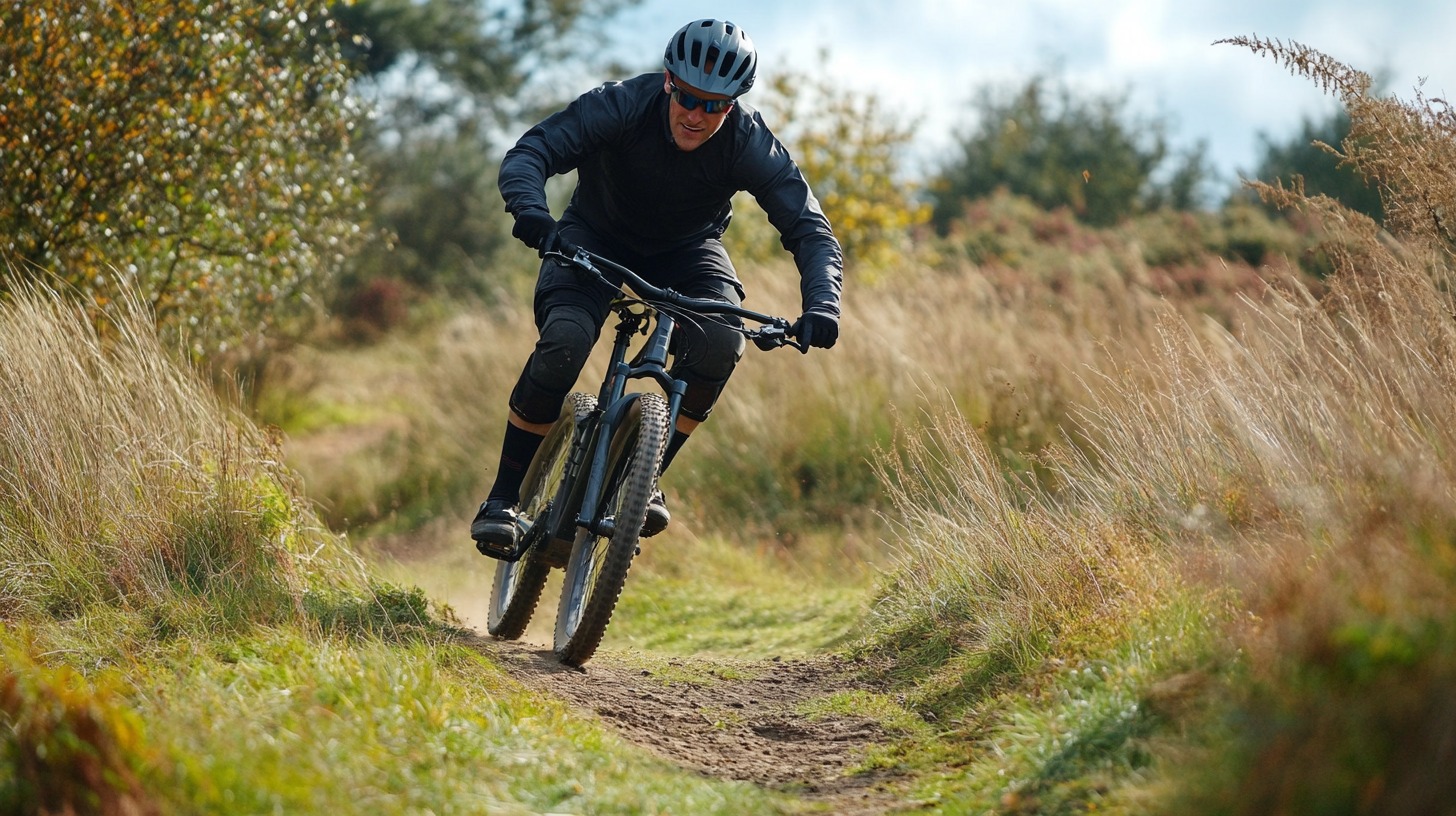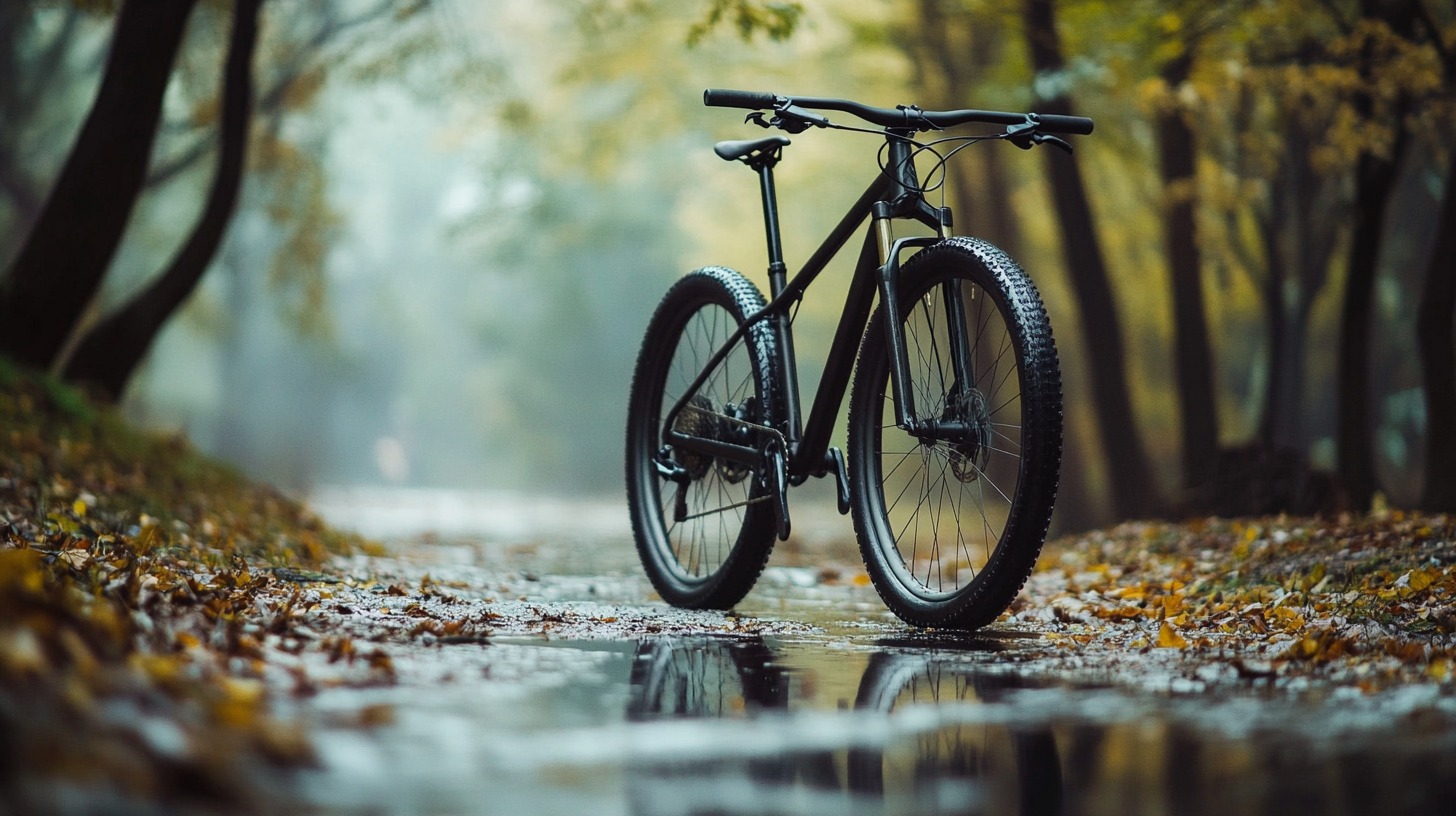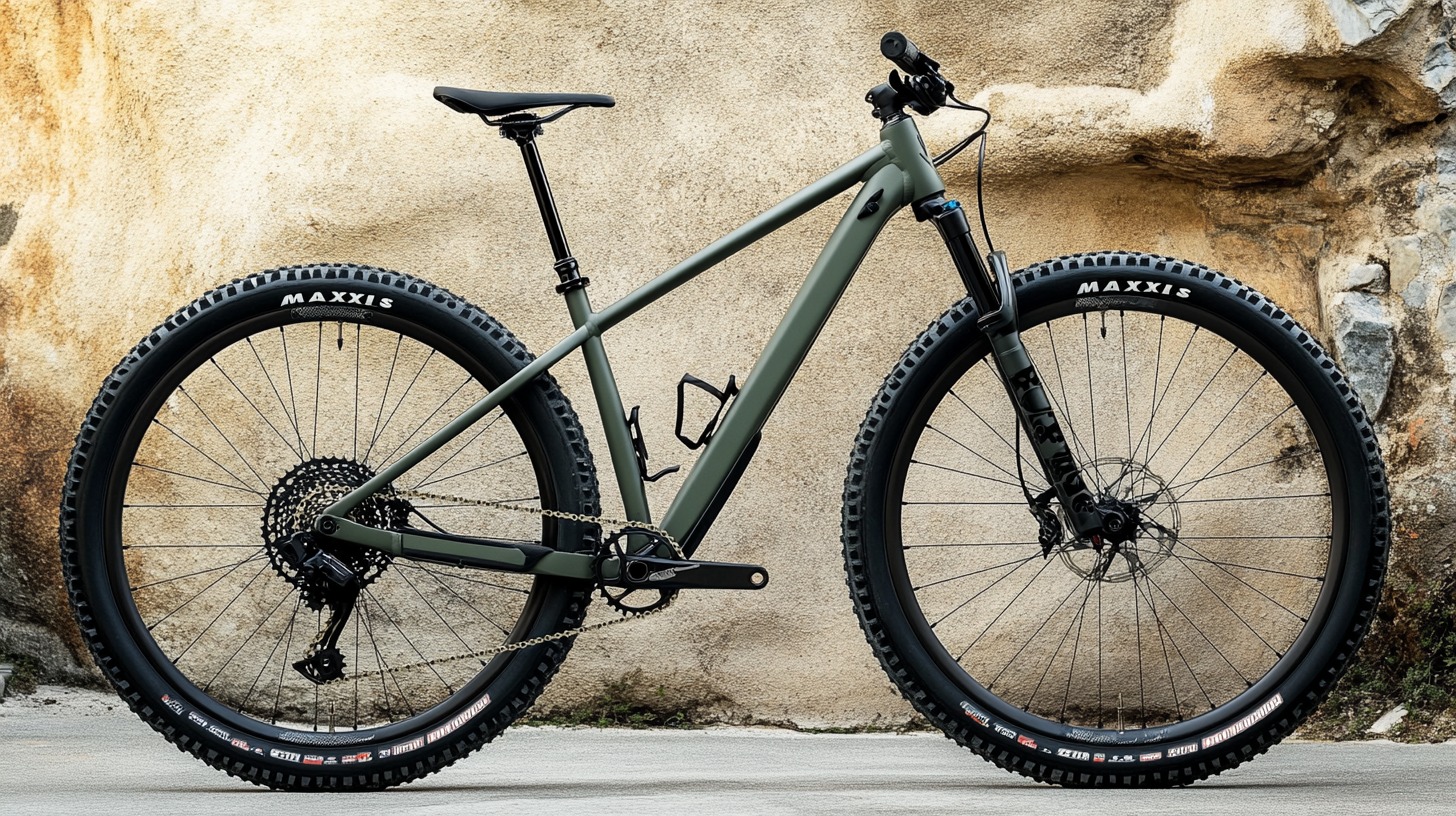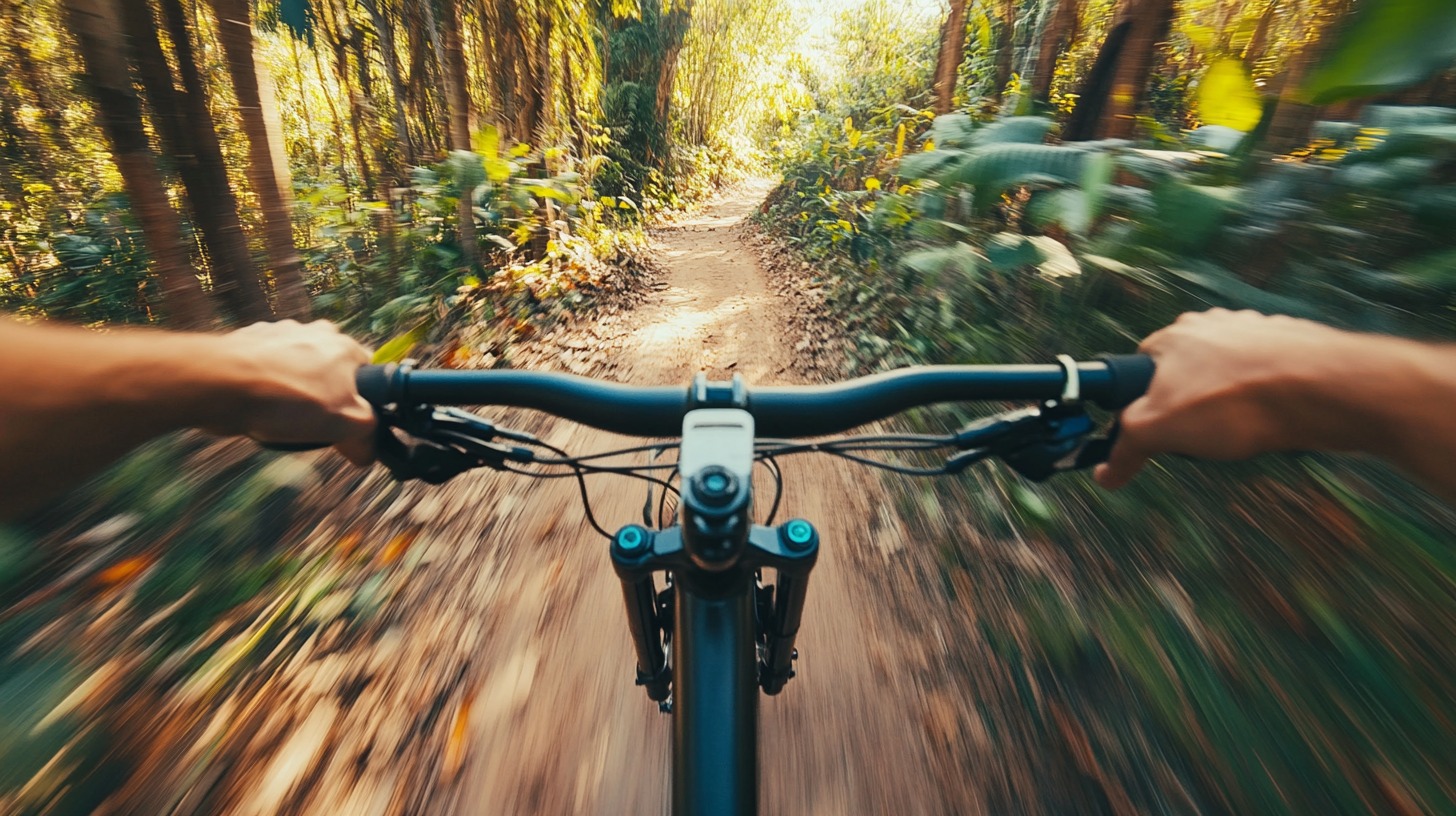Riding a hardtail bike downhill or at a bike park sparks curiosity among mountain biking enthusiasts.
While full-suspension bikes are often the go-to for these activities, hardtails present a unique challenge and appeal.
By exploring the characteristics of hardtails and their suitability for these environments, we’ll provide valuable insights for those considering this adventurous approach.
Riding a Hardtail Downhill
When it comes to downhill riding, the suitability of a hardtail bike is often questioned.
- Technical features
- Steep descents
- Rough terrain
It must be said that all of them challenge both the bike and the rider.
Hardtails, with their rigid rear ends, are generally not the first choice for downhill due to the lack of rear suspension, which makes handling rough terrain more difficult and less comfortable.
One of the significant challenges of riding a hardtail downhill is the direct feedback from the trail. Without rear suspension to absorb impacts, the rider must rely on their skills to navigate obstacles and maintain control.
The lack of rear suspension means that the rider absorbs more of the impact, which can lead to fatigue over prolonged descents.
There are some advantages to using a hardtail for downhill riding.
Riding hardtail forces the rider to develop better techniques, such as choosing smoother lines and improving their ability to read the trail.
The direct feedback from the trail also allows riders to become more in tune with their bike, enhancing their overall riding skills.
For those who enjoy a challenge and want to refine their abilities, a hardtail can be a valuable tool.
While hardtails are not typically recommended for highly technical downhill trails, they can be suitable for less demanding descents or trails with fewer obstacles.
Riding at slower speeds and choosing smoother lines can mitigate some of the disadvantages of a hardtail, making it a viable option for riders who prefer simplicity and a more connected riding experience.

Riding a Hardtail at a Bike Park
Riding a hardtail at a bike park is an entirely different experience compared to riding a fully.
Bike parks are designed with a variety of trails and features, catering to different skill levels and riding styles.
Hardtails can be feasible in a bike park setting, but it’s essential to consider the type of trails and features you plan to ride.
Flow trails, with their smooth, rolling terrain, are particularly well-suited for hardtails. These trails often feature berms, rollers, and small jumps that can be navigated comfortably on a hardtail.
The bike’s lighter weight and direct handling make it agile on these trails, allowing for a playful riding experience.
Singletracks with moderate technical features can also be enjoyable on a hardtail, as long as the rider is prepared to handle the lack of rear suspension.
However, more technical trails that feature large drops, rock gardens, and root-laden sections might pose a challenge for hardtail riders.
These trails demand a high level of skill and physical endurance, as the lack of rear suspension requires the rider to absorb much of the impact with their body.
For this reason, hardtail riders might find themselves avoiding the more aggressive lines in favor of smoother, less punishing routes.
Riding a hardtail in a bike park can be an excellent way to develop skills. The rigid rear end encourages riders to focus on technique, such as proper jumping form and maintaining control through corners.
It also teaches riders to be more deliberate with their line choices, which can translate into better overall biking performance.
Practical tips for riding a hardtail in a bike park include setting up the bike with slightly lower tire pressure for better traction and comfort, choosing trails that match your skill level, and managing expectations regarding the bike’s capabilities.
Maintenance and Cost Considerations
One of the key benefits of hardtail mountain bikes is their reduced maintenance requirements compared to full-suspension bikes.
- Simplicity: Hardtails have fewer moving parts, making them simpler machines that require less frequent and less costly maintenance.
- Durability: The absence of a rear shock and associated linkages means fewer components can wear out or require adjustment.
- Affordability: Hardtails generally come with a lower price tag than full-suspension bikes, making them an attractive option for:
- Riders on a budget.
- Beginners may not want to invest heavily in a more complex machine.
- Lower Ongoing Costs: The cost savings extend beyond the initial purchase, with ongoing expenses like servicing and parts replacement typically being lower for hardtails.
For riders who value both economy and ease of maintenance, a hardtail is an excellent choice. Although they might not provide the cushioned ride of a full-suspension bike, their durability and lower upkeep make them a practical option for a variety of riding scenarios.
Fun Factor and Versatility of Hardtails
Hardtails bring a unique fun factor to the riding experience, largely due to their simplicity and direct connection to the trail.
Unlike full-suspension bikes, hardtails offer a raw and unfiltered riding experience. Without the cushioning effect of rear suspension, every bump, jump, and turn is felt more acutely, making each ride more engaging and exciting.
The challenge of mastering a hardtail bike requires a higher level of skill and concentration, making the riding experience both rewarding and invigorating.
Engaging and Exciting Riding Experience

Riding a hardtail is not just about getting from point A to point B—it’s about the journey itself.
The lack of rear suspension means that every aspect of the trail is transmitted directly to the rider.
For those who thrive on challenges, the heightened sensitivity to the trail turns even the simplest rides into an adventure.
Versatility of Hardtails
The versatility of hardtails is another key advantage that sets them apart from their full-suspension counterparts.
These bikes are incredibly adaptable and capable of handling a wide variety of terrains and activities.
Their lightweight design makes them easy to maneuver, and their straightforward mechanics ensure reliability across different environments.

The Bottom Line
Riding a hardtail downhill or at a bike park is an experience filled with challenges and rewards.
While they may not be the ideal choice for every rider or trail, hardtails offer a unique opportunity to develop skills and enjoy a more connected ride.
Give it a try, and you might find that riding a hardtail opens up new possibilities on the trails.

